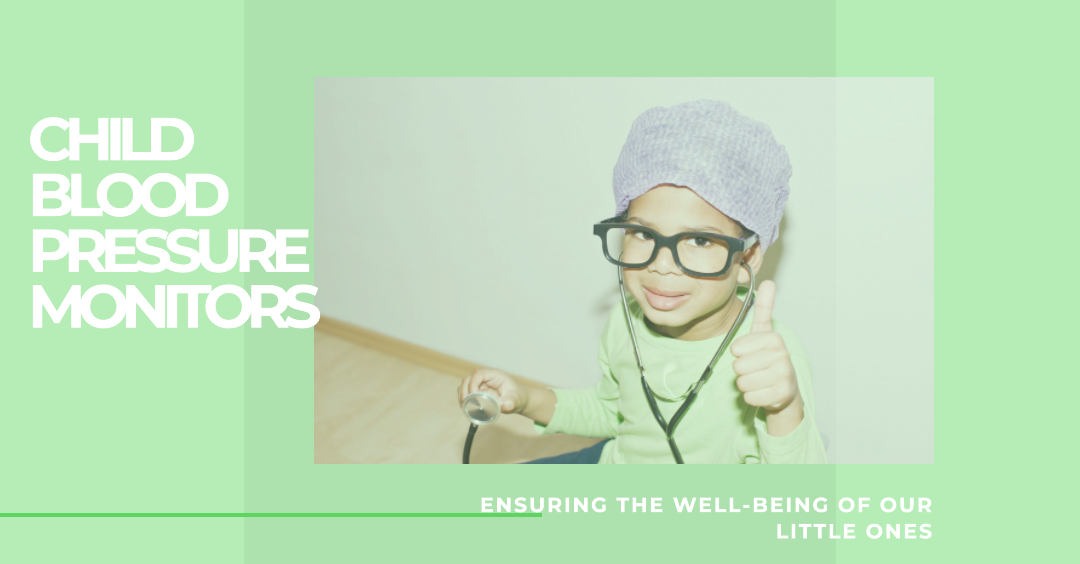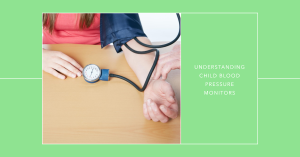
As parents, we understand the importance of monitoring our children’s health and well-being. One crucial aspect that often goes unnoticed is their blood pressure. While high blood pressure is commonly associated with adults, children can also experience this health concern.
To ensure the optimal development and overall health of our little ones, it is essential to pay attention to their blood pressure levels. In this comprehensive guide, we will delve into the significance of child blood pressure monitors and provide you with valuable insights to help you make informed decisions.
Understanding Child Blood Pressure Monitors: Taking The First Step

Child blood pressure refers to the force exerted by the blood against the walls of the arteries. It is measured using two numbers: systolic pressure and diastolic pressure.
The systolic pressure represents the force when the heart beats, while the diastolic pressure indicates the force when the heart is at rest between beats. A child’s blood pressure is influenced by various factors, including age, height, weight, and overall health.
The Importance of Monitoring
Monitoring a child’s blood pressure is vital for early detection of any potential health issues. High blood pressure in children can be a sign of an underlying condition or lifestyle factors that need attention.
By identifying and addressing these concerns at an early stage, we can effectively manage and prevent further complications.
Identifying Risk Factors
Childhood obesity, a sedentary lifestyle, a family history of high blood pressure, and certain medical conditions can increase the risk of high blood pressure in children. By monitoring their blood pressure regularly, we can identify these risk factors and take necessary steps to mitigate them.
It is important to remember that even children who appear healthy can experience high blood pressure, making monitoring a crucial aspect of their overall well-being.
Promoting Healthy Habits
Regular blood pressure monitoring allows parents and caregivers to encourage healthy habits in their children. By identifying any elevated blood pressure readings, we can take proactive measures to promote a balanced diet, regular physical activity, and stress management techniques.
These positive lifestyle changes not only help regulate blood pressure but also contribute to their overall development and long-term well-being.
Choosing the Right Blood Pressure Monitor
Selecting an appropriate blood pressure monitor for your child is a critical decision. Several factors need to be considered to ensure accurate readings and a comfortable experience.
Pediatric-Specific Features
Opt for a blood pressure monitor that is specifically designed for children. These monitors often come with cuffs that fit smaller arms, making the process less intimidating and more comfortable for your child.
Additionally, look for monitors with user-friendly interfaces and clear instructions to facilitate ease of use.
Cuff Size and Fit
To obtain accurate readings, it is crucial to ensure the cuff fits your child’s arm properly. Using an ill-fitting cuff may result in inaccurate readings.
Measure your child’s arm circumference and refer to the manufacturer’s guidelines to select the appropriate cuff size. A well-fitting cuff guarantees reliable and consistent readings.
Digital vs. Manual Monitors
Digital blood pressure monitors are commonly used due to their ease of use and accurate readings. They are automated, simplifying the measurement process and minimizing the potential for error.
Manual monitors, on the other hand, require a higher level of expertise to operate effectively. For most parents and caregivers, digital monitors provide a more practical and convenient option.
Best Practices for Blood Pressure Measurement
To ensure accurate readings and a positive experience for your child, it is essential to follow best practices when measuring their blood pressure.
Choose the Right Time
Select a time when your child is relaxed and calm. Avoid measuring their blood pressure immediately after physical activity or during a period of heightened stress. This allows for more accurate and consistent readings.
Provide a Comfortable Environment
Create a calm and comfortable environment during the measurement process. Find a quiet space where your child can sit or lie down comfortably. Eliminate distractions and offer reassurance throughout the procedure.
Follow the Instructions
Carefully read and follow the instructions provided by the blood pressure monitor manufacturer. Understanding the correct technique for measurement ensures reliable and accurate results.
Take Multiple Measurements
It is recommended to take multiple measurements at different times to establish a baseline and identify any variations. Consult with your healthcare provider regarding the frequency and specific instructions for monitoring your child’s blood pressure.
Seeking Professional Guidance
While monitoring your child’s blood pressure at home is essential, it is equally important to consult with a healthcare professional. They can provide expert guidance, evaluate the readings, and offer appropriate recommendations based on your child’s unique circumstances.
Conclusion: Child Blood Pressure Monitors
By prioritizing the monitoring of our children’s blood pressure, we take a significant step toward safeguarding their health and well-being. Early detection of high blood pressure and implementation of necessary lifestyle changes can prevent future complications and promote a healthy lifestyle.
Remember to choose a pediatric-specific blood pressure monitor, follow best practices for measurement, and seek professional guidance when needed. Together, let’s ensure our little ones grow up strong, healthy, and full of vitality.





